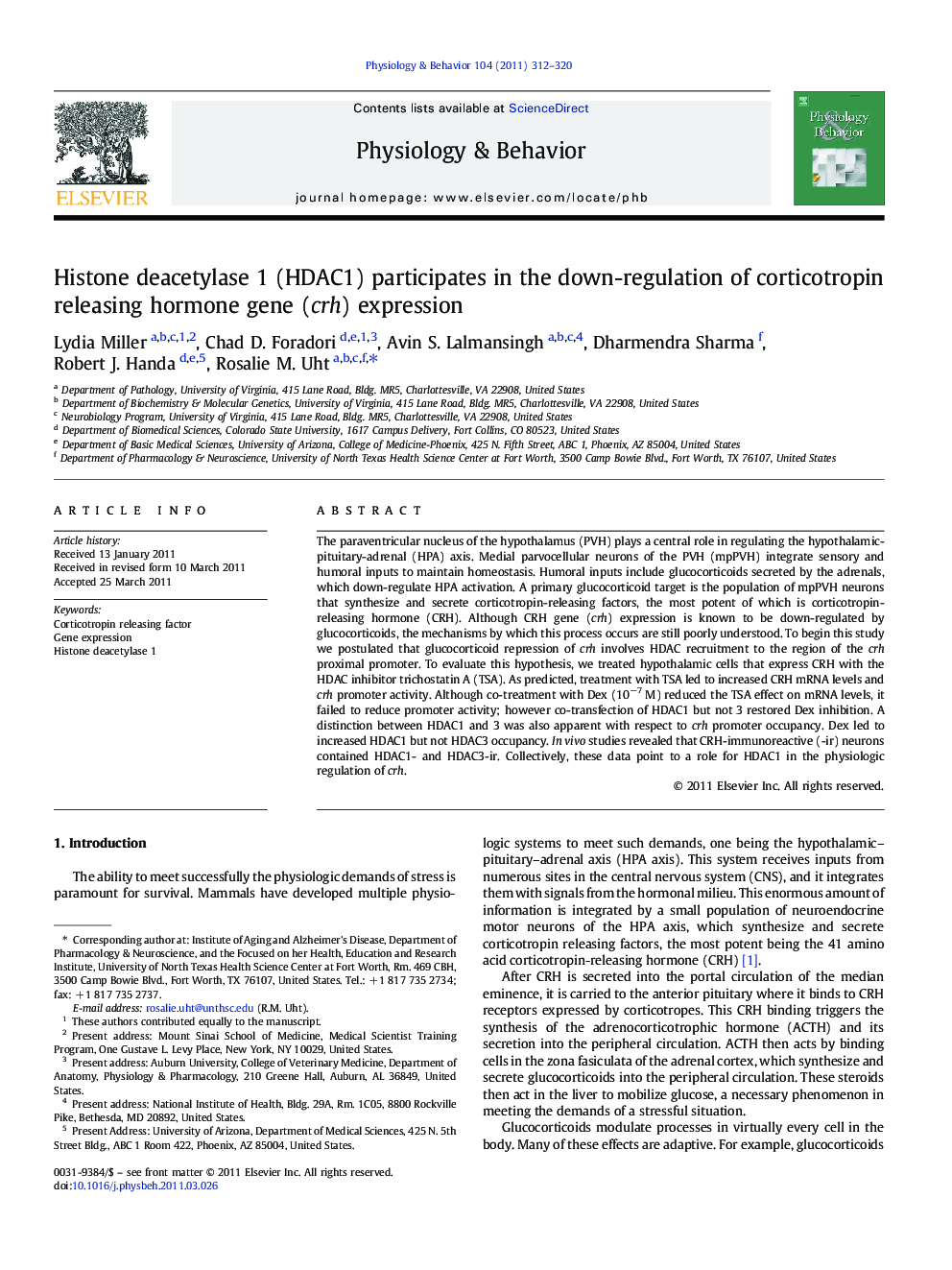| Article ID | Journal | Published Year | Pages | File Type |
|---|---|---|---|---|
| 2844556 | Physiology & Behavior | 2011 | 9 Pages |
The paraventricular nucleus of the hypothalamus (PVH) plays a central role in regulating the hypothalamic-pituitary-adrenal (HPA) axis. Medial parvocellular neurons of the PVH (mpPVH) integrate sensory and humoral inputs to maintain homeostasis. Humoral inputs include glucocorticoids secreted by the adrenals, which down-regulate HPA activation. A primary glucocorticoid target is the population of mpPVH neurons that synthesize and secrete corticotropin-releasing factors, the most potent of which is corticotropin-releasing hormone (CRH). Although CRH gene (crh) expression is known to be down-regulated by glucocorticoids, the mechanisms by which this process occurs are still poorly understood. To begin this study we postulated that glucocorticoid repression of crh involves HDAC recruitment to the region of the crh proximal promoter. To evaluate this hypothesis, we treated hypothalamic cells that express CRH with the HDAC inhibitor trichostatin A (TSA). As predicted, treatment with TSA led to increased CRH mRNA levels and crh promoter activity. Although co-treatment with Dex (10−7 M) reduced the TSA effect on mRNA levels, it failed to reduce promoter activity; however co-transfection of HDAC1 but not 3 restored Dex inhibition. A distinction between HDAC1 and 3 was also apparent with respect to crh promoter occupancy. Dex led to increased HDAC1 but not HDAC3 occupancy. In vivo studies revealed that CRH-immunoreactive (-ir) neurons contained HDAC1- and HDAC3-ir. Collectively, these data point to a role for HDAC1 in the physiologic regulation of crh.
Research Highlights► The data reveal a role for histone deacetylation in negative regulation of crh. ► HDAC1 but not HDAC3 is involved in this negative regulation. ► HDAC1 and CRH colocalization in the PVH suggests a physiological role for HDAC1.
